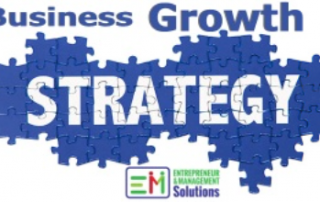Angela Ahrendts – Former CEO of Burberry
Angela Jean Ahrendts, DBE is an American businesswoman and the Senior Vice President of Retail at Apple Inc. She was the CEO of Burberry from 2006 to 2014. Ahrendts left Burberry to join Apple in 2014. This video is an extract from Khan Academy
This video is an extract from Khan Academy:
Strategy of People and Products
The third leg of our series on Strategy is on People and Products. This follows last week’s lesson on Purpose.
What strategy is required in order to leverage your Human assets within a business? It is not just about headcount or workforce: we need to consider the intellectual capital, wisdom, experience and relationships that come with each of your staff members.
The strategy implemented within a business should include the following:
· Staff retention
· Staff empowerment
· Staff education
· Legacy planning
Products and services within a business are also assets that need to be looked after and protected. Each different brand has a reputation in the marketplace, a following with the customers and a future of expansion. Strategies need to include the following:
· Product brand development
· Brand footprint expansion
· Existing customer retention
· Switch over customers per brand
· New customers per brand
· Associated or bundled up-sell potential
· Income diversification per product
All these may seem a little overwhelming and unattainable if you are new to all this, but these are the things that should be on the agenda of directors meetings and a part of the long-term strategic planning for any business.
We will, of course, expand on these during our weekly webinar on Wednesday. Go here to register that.
Any questions or want some help with this, please give us a call or click to make an appointment in person or via Skype.
The Strategy of Purpose
| What is the purpose of your business? You should at some stage compose a set of purpose statements, that when reading together, define the business’s purpose.
These are some ideas to start with: 1. What are the reasons for starting your business? 2. Where is the business destined to go? 3. What problem are you solving? 4. Who are you planning to reach? 5. What resources do you need? Watch the video below for the full master class. |
Perfomance Measurement: Product & Service Quality
We continue this week with our discussion on Performance Measurement. Last week we explored some practical examples on how businesses in different sectors can measure their performance using NFPIs.
This week we conclude the topic by looking at the product or service that the business offers and how the business can measure the performance of their operations.
The product or service that the business offers is the ‘raison d`etre’ of the business or the purpose of its existence. A lack of quality can lead to customer dissatisfaction and loss of sales. A company should always critically and objectively review their offering and compare it to the competition and customer expectations and needs. Business owners or managers should ask themselves:
· Is my product or service offering good value?
· Does it deliver quality superior performance?
· How does it fair relative to competitors?
· With industry developments, can my product or service remain relevant with changing technological trends?
In Summary, the following are good examples of NPFIs:
Product quality
- Percentage of items rejected by quality control
- Number of items returned by customers
Product delivery
- Percentage of customer orders delivered on time
- Waiting time from order to delivery
- Cycle time
Customer satisfaction
- Number of customers returning
- Number of complaints
After-sales service
- Waiting time
- Number of complaints
- Use of customer surveys to measure their satisfaction.
Benefits of Non-Financial Performance Indicators
The balanced scorecard philosophy asks the critical questions at the heart of business growth and sustainability. It looks at performance from four perspectives:
1. Customer Perspective –how do we look to the client, customer ratings?
2. Internal business process perspective –at what must we excel?
3. Learning & growth perspective –continuous change and growth in a dynamic innovative age.
4. Financial perspective –how do we look to shareholders?
These four factors complement each other; for example, relatively greater customer satisfaction will result in greater revenues and profits, consequently improving the financial perspective.
Financial performance measures are lagging indicators of performance, this is because financial performance is a result of past decisions. On the other hand, NFPIs are lead indicators in that they drive future financial performance as they focus on the customer, internal business processes and learning and growth.
Scott Cook – Founder of the Executive Committee, Intuit
This video is an extract from Khan Academy Scott Cook Founder and Chairman of the Executive Committee, Intuit.
Scott Cook was born and raised in a suburb of L.A. after his parents emigrated from Wisconsin. He attended the University of Southern California, then Harvard Business School. Scott started his career at P&G in Cincinnati in brand management, where he met his future wife Signe Ostby when seeking advice from other brand groups. Though Intuit struggled in its early years, with VCs refusing to invest, the business eventually improved. Scott is still at Intuit today and has learned to love tax season. He funds social entrepreneurs catalyzing global leaps in education and medical research. He resides in Woodside, California.



